Miracle in Milan Blu-ray Movie
HomeMiracle in Milan Blu-ray Movie 
Miracolo a MilanoCriterion | 1951 | 101 min | Not rated | Apr 19, 2022
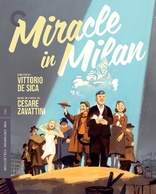
Movie rating
7.3 | / 10 |
Blu-ray rating
| Users | 0.0 | |
| Reviewer | 4.0 | |
| Overall | 4.0 |
Overview
Miracle in Milan (1951)
On the outskirts of Milan, a band of vagabonds work together to form a shantytown. When it is discovered that the land they occupy contains oil, however, it's up to the cherubic orphan Totò—with some divine help—to save their community from greedy developers.
Starring: Emma Gramatica, Francesco Golisano, Paolo Stoppa, Brunella Bovo, Guglielmo BarnabòDirector: Vittorio De Sica
| Foreign | Uncertain |
| Drama | Uncertain |
| Fantasy | Uncertain |
| Comedy | Uncertain |
Specifications
Video
Video codec: MPEG-4 AVC
Video resolution: 1080p
Aspect ratio: 1.37:1
Original aspect ratio: 1.37:1
Audio
Italian: LPCM Mono (48kHz, 24-bit)
Subtitles
English
Discs
Blu-ray Disc
Single disc (1 BD)
Playback
Region A (locked)
Review
Rating summary
| Movie | 3.5 | |
| Video | 4.0 | |
| Audio | 4.5 | |
| Extras | 4.0 | |
| Overall | 4.0 |
Miracle in Milan Blu-ray Movie Review
Reviewed by Dr. Svet Atanasov April 3, 2022Vittorio De Sica's "Miracle in Milan" (1951) arrives on Blu-ray courtesy of Criterion. The supplemental features on the disc include new program with film scholar David Forgacs; new documentary film about the life and legacy of screenwriter Cesare Zavattini; archival interviews; promotional materials; and more. In Italian, with optional English subtitles for the main feature. Region-A "locked".
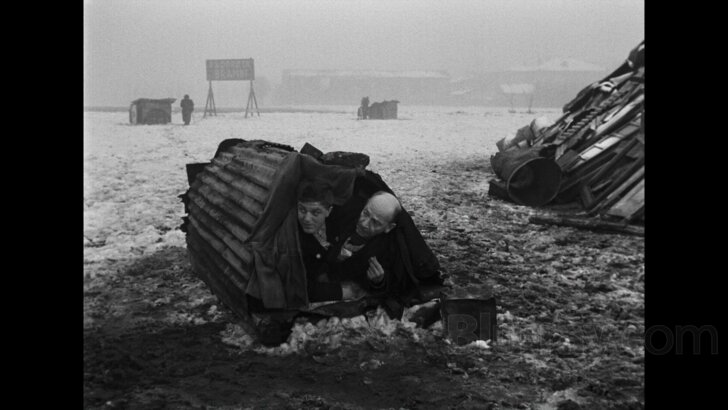
At home
If Vittorio De Sica’s Miracle in Milan is to be profiled as an Italian neorealist film, then the only way in which it can be done is to write that it is the strangest amongst them. There just isn’t another one like it. Indeed, it looks and behaves like a film from a completely different era.
Somewhere on the outskirts of Milan, the aging Lolotta (Emma Gramatica) discovers a beautiful baby boy in her garden. Even though she can barely make ends meet, she decides to keep him and immediately names him Toto. For a while the two live happily in Lolotta’s shack and she teaches him everything his real mother would have. Then one day Lolotta collapses and dies, and the local authorities promptly place Toto in an orphanage.
Years later, Toto (Francesco Golisano) emerges from the orphanage overflowing with optimism for the future. While looking for a place to live, he tries to be friendly and helpful to the strangers around him, but in return for his kindness one that looks exactly like him attempts to steal his bag. It is then that Toto finally realizes that excluding the very wealthy everyone else is barely surviving, which is why there is so much misery, crime and despair all across Milan.
At a rapidly growing shantytown that has welcomed the poorest of the poor, Toto and a few friends accidentally discover oil in the ground. Shortly after, the news reaches the area’s biggest developers and the shantytown and its residents realize that it is only a matter of time before they are forced to relocate. But the news also reaches Lolotta and she leaves Heaven to give Toto a white dove that instantly transforms him into a powerful magician.
The original story that inspired De Sica to shoot Miracle in Milan comes from his close collaborator Cesare Zavattini, but according to different reports it underwent multiple edits before production of the film was greenlighted. Even Zavatini’s novel Toto the Good (Toto il buono), which was published more than a decade before Miracle in Milan premiered in 1951, apparently features some notable modifications of the original story.
Miracle in Milan is broken into two acts and in its current form it is essentially a fairy tale for adults that is exceptionally easy to promote to children as well. The first act has the bulk of the straightforward neorelist material, while the second act introduces the crucial transformation that makes the film suitable for children.
It is not difficult to conclude that De Sica’s intent was to once again put the spotlight on his country’s post-war transformation and the misery it had brought to its most vulnerable citizens. However, the contrasts that emerge in Miracle in Milan and the bigger picture they are attached to are awfully difficult to compare to the ones observed in the likes of Shoeshine, Bicycle Thieves, and Umberto D.. Obviously, the nature of Zavatini’s story makes it impossible to produce a similarly authentic film, but its visualization by De Sica is unusual as well. This really is the main reason why Miracle in Milan ought to be in a category of its own -- it is a hybrid project with a legitimately different personality that isn’t modeled after the one De Sica favored for his big neorealist films.
Even though the large cast featured many non-professional actors, there is plenty of carefully scripted and executed melodrama that does not feel right for a neorealist film. Somewhat predictably, Golisano’s performance is the most problematic, but virtually all of the professional actors that played memorable characters do similar overly expressive work.
Ultimately, Miracle in Milan has always been better received by children because of the unusual transformation from the second act. When seen strictly through the classic prism of Italian neorealist cinema, at best it remains just a charming oddity.
Miracle in Milan Blu-ray Movie, Video Quality 
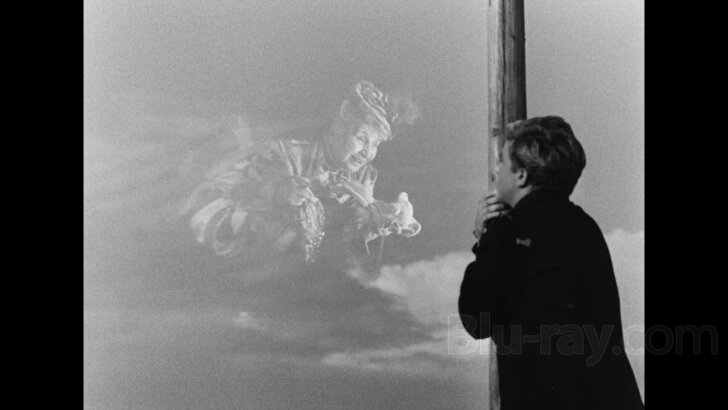
Presented in its original aspect ratio of 1.37:1, encoded with MPEG-4 AVC and granted a 1080p transfer, Miracle in Milan arrives on Blu-ray courtesy of Criterion.
The following text appears inside the booklet that is provided with this Blu-ray release:
"This new 4K digital restoration was undertaken by Fondazione Cineteca di Bologna and Compass Film, in collaboration with Arthur Cohn, Mediaset, Infinity, and Variety Communications, from the 35mm original camera negative at L'Immagine Ritrovata in Bologna, Italy. Some sections of the negative were in advanced state of chemical decay and were replaced with an interpositive preserved at Studio Cine. A first-generation print, deposited by Manuel De Sica at Cineteca di Bologna, was used as a reference. The monaural soundtrack was remastered from the original soundtrack negative.
Colorist: Luca Bigazzi."
While the new presentation of Miracle in Milan is the best I have seen to date, it is quite frustrating. Here's why:
It is very easy to tell that the 4K scan that was prepared by the restorers was of exceptionally high-quality. Indeed, excluding a few small areas where density levels drop quite a bit, it is actually pretty difficult to tell precisely what type of reconstruction work was needed and where before the 4K master was finalized. Also, while some rebalancing work must have been done, I did not see any big and compromising traces of digital work. (I refer to degraing work and other similar adjustments). However, this master is graded in a very particular manner that destabilizes the native dynamic range of the visuals. As a result, there are quite a few areas where light but unmissable digital flatness begins to emerge. The flatness is present during daylight, darker indoor and nighttime footage. You can see examples in screencaptures #4, 8, 22, and 27. You should even be able to recognize the effect when the film's original title appears on your screen (see screencapture #32). So, to be perfectly clear, this flattening effect isn't a source limitation, or an issue introduced by the encode, but a byproduct of improper grading. It is an old and reoccurring flaw, too. For example, it is even easier to identify on the 4K restoration of Rocco and His Brothers that was prepared at the L'Immagine Ritrovata laboratory a few years ago. The rest looks quite magnificent. Some of the brightly lit outdoor footage can look especially good and it is absolutely impossible to tell that plenty of work was required to bring the film to its current state. I did not notice any large and distracting age-related imperfections either. All in all, unless this exact same 4K restoration is made available on 4K Blu-ray sometime in the future, and with adjusted gamma settings, the current presentation should remain the definitive presentation of Miracle in Milan on the home video market. (Note: This is a Region-A "locked" Blu-ray release. Therefore, you must have a native Region-A or Region-Free player in order to access its content).
Miracle in Milan Blu-ray Movie, Audio Quality 
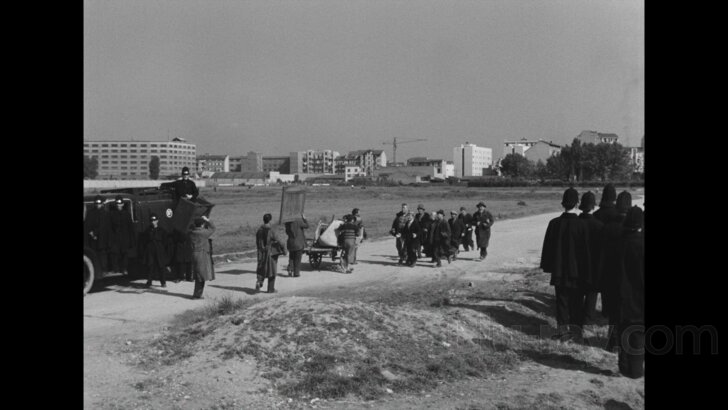
There is only one standard audio track on this Blu-ray release: Italian LPCM 1.0. Optional English subtitles are provided for the main feature.
The is clear and easy to follow. However, it quickly becomes obvious that time was not kind to it and most likely has done some irreversible damage. For example, there are a few outdoor sequences where the audio becomes quite thin, even hissy, so stability isn't optimal. Also, the dynamic balance can fluctuate a bit as well, but given the age of the film this isn't surprising. There are no audio dropouts to report. The English translation is excellent.
Miracle in Milan Blu-ray Movie, Special Features and Extras 

- David Forgacs - in this new program, film scholar David Forgacs discusses the genesis of Miracle in Milan, the often rocky relationship between Vittorio De Sica and screenwriter Cesare Zavattini, the socio-cultural environment in Italy at the time when the film was made, and the evolution of Italian Neorealism. The program was produced in New York in 2021. In English, not subtitled. (28 min).
- Interviews -
1. Brunella Bovo - in this archival video interview, actress Brunella Bovo, who plays the character of Edvige, recalls her initial encounter and work with Vittorio De Sica and discusses her contribution to Miracle in Milan. In Italian, with English subtitles. (6 min).
2. Manuel De Sica - in this archival interview, Manuel De Sica, son of director Vittorio De Sica, discusses the conception and stylistic identity of Miracle in Milan. In Italian, with English subtitles. (8 min).
3. Vittorio De Sica - in this archival audio interview, Vittorio De Sica discusses his career and the evolution of Italian cinema during and after the neorealist period. The interview was conducted by critic Gideon Bachmann in the late 1960s. In Italian, with English subtitles. (8 min).
- Cesare Zavattini - this recent documentary takes a closer look at the life and legacy of screenwriter, publisher, novelist and film theorist Cesare Zavattini. It was made as part of an ongoing Italian television series profiling important historical figures in 2019. In Italian, with English subtitles. (54 min).
- Trailers -
1. Original theatrical trailer.
2. Rerelease trailer (2021).
- Booklet - 30-page illustrated booklet featuring an essay by film critic Christina Newland and "Totò il buono," a 1940 treatment by Cesare Zavattini that is the earliest version of the story on which Miracle in Milan is based, as well as technical credits.
Miracle in Milan Blu-ray Movie, Overall Score and Recommendation 
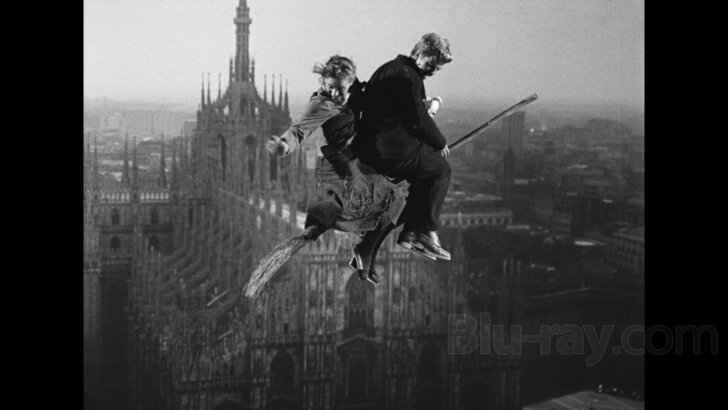
My grandfather was a big admirer of Miracle in Milan and while he was alive we often had long discussions where he would do a lot to convince me to match his enthusiasm for it. The truth about this film is that it is not one of Vittorio De Sica's best. It feels like it belongs next to the likes of Shoeshine, Bicycle Thieves, and Umberto D., but I am unsure it is right to insists that it does, and if it isn't seen through the same neorealist prism and judged as these three films have been in the past, it actually becomes much easier to like. Criterion's upcoming Blu-ray release is sourced from a new 4K master that was prepared at L'Immagine Ritrovata in Italy. RECOMMENDED.
Similar titles
Similar titles you might also like

Céline and Julie Go Boating
Céline et Julie vont en bateau: Phantom Ladies Over Paris
1974

April and the Extraordinary World
Avril et le monde truqué
2015

Warm Water Under a Red Bridge
Akai hashi no shita no nurui mizu / 赤い橋の下のぬるい水 / Slipcover in Original Pressing
2001

Uncle Boonmee Who Can Recall His Past Lives
Loong Boonmee raleuk chat
2010

Beauty and the Beast
La belle et la bête
1946

Intervista
Fellini's Intervista
1987

Valerie and Her Week of Wonders
Valerie a týden divu
1970

The Rocket
2013

Le Pont du Nord
1981

The Voice of the Moon
La voce della luna
1990

Le Havre
2011

Amarcord
1973

A Man Called Ove
En man som heter Ove
2015

The Blood of a Poet
Le sang d'un poète
1930

Miracle of Marcelino
Marcelino, pan y vino
1955

Belladonna of Sadness 4K
1973

The Lure
Córki dancingu
2015

I Wish
Miracle / 奇跡 | Kiseki
2011

Mysteries of Lisbon
Mistérios de Lisboa
2010

Right Now, Wrong Then
지금은맞고그때는틀리다
2015